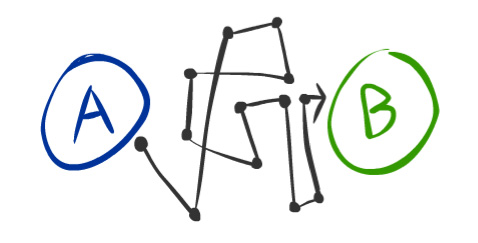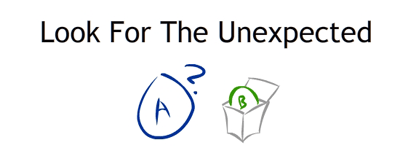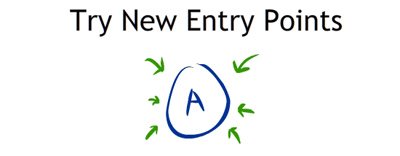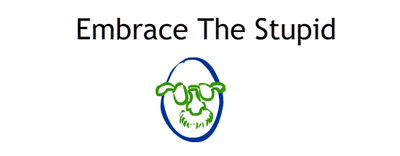
I had the pleasure of hearing a talk by Jillian Perez recently. The subject was "thinking wrong", a thought process that forces the mind out of cookie-cutter style problem solving and unlocks your creative potential.
Surprising, Innovative, And Down Right Brilliant Solutions
Although Jillian discussed thinking wrong mostly in the terms of graphic design, the techniques can be applied to many situations. Most projects tackled at work or home will require a problem solving thought process. When this process is gone about the "wrong" way, it can yield surprising, innovative, and down right brilliant solutions.
Keep reading for more insight on thinking wrong and my personal take on thinking wrong techniques.
Disclaimer
I am by no means an expert in the thinking wrong philosophy, or a representative of the movement. I encourage you to explore the other resources out there and put the theories of thinking wrong to the test for yourself.
Why Should I Think Wrong?
At the core of how humans solve problems is a process that drives the brain to solutions that are familiar, comfortable, and direct. This may be efficient, but it doesn't derive creative or unique solutions, which are often better.
Repetition Builds Specific Neural Pathways Over Time, Which Your Brain Intern Favors
The phenomenon that prevents your brain from developing highly creative solutions is called a heuristic, or cognitive bias. This bias is developed in your brain as similar problems are solved over and over again. Repetition builds specific neural pathways over time, which your brain intern favors over building new ones that result in highly creative solutions to the same problems.
The thinking wrong process can force your brain out of this pattern, and bring creativity to your thought process. At first it can be quite difficult -- after all, your are essentially starting to argue with your own brain. But don't fear, gentle readers, here are some techniques for winning the argument.

Just because something has been done the same way for a long time doesn't mean it's a good idea. Take a step back and ask, why do we do it this way? Are there actually advantages to the current way, or is it just the most familiar and comfortable option?

A good way to bring attention to a new idea, and raise questions about old ones, is to be a disruptive force. When everyone else charges a fortune, give your product away. If the competition is doing X and Y, do Z. Historically, some of the most successful business ideas have been ones that were a disruptive force in their industries.

Sometimes the best ideas come from completely unexpected places. The post-it-note was actually the product of an experiment to develop a super adhesive, not a weak one that doesn't leave residue. Don't disregard potential solutions just because the come from an unusual place.

If you always start your problem-solving process at the same place, it's likely to end in a predictable place. For a creative outcome, change your entry point and perspective on a problem. If you usually start a design with user A in mind, start from user B's perspective. Often a neglected point of view has the path to a creative solution.

At one point, many great ideas seamed utterly stupid. For example, when eBay was in its infancy, the idea that complete strangers would buy and sell goods, without meeting, or ever seeing the item in person, was preposterous. Billions of dollars later, the idea doesn't seem so dumb. When your brain says something is stupid, don't take its word -- argue back.
Good Luck
Hopefully thinking wrong will help come up with the best ideas you've ever had. Although I have only been aware of the thinking wrong philosophy for a short time, I have embraced it and am already feeling more creative. Let me know your thoughts and experiences with thinking wrong, so I can in turn think wrong about them.